- News
- Reviews
- Bikes
- Components
- Bar tape & grips
- Bottom brackets
- Brake & gear cables
- Brake & STI levers
- Brake pads & spares
- Brakes
- Cassettes & freewheels
- Chains
- Chainsets & chainrings
- Derailleurs - front
- Derailleurs - rear
- Forks
- Gear levers & shifters
- Groupsets
- Handlebars & extensions
- Headsets
- Hubs
- Inner tubes
- Pedals
- Quick releases & skewers
- Saddles
- Seatposts
- Stems
- Wheels
- Tyres
- Tubeless valves
- Accessories
- Accessories - misc
- Computer mounts
- Bags
- Bar ends
- Bike bags & cases
- Bottle cages
- Bottles
- Cameras
- Car racks
- Child seats
- Computers
- Glasses
- GPS units
- Helmets
- Lights - front
- Lights - rear
- Lights - sets
- Locks
- Mirrors
- Mudguards
- Racks
- Pumps & CO2 inflators
- Puncture kits
- Reflectives
- Smart watches
- Stands and racks
- Trailers
- Clothing
- Health, fitness and nutrition
- Tools and workshop
- Miscellaneous
- Buyers Guides
- Features
- Forum
- Recommends
- Podcast
BUYER'S GUIDE
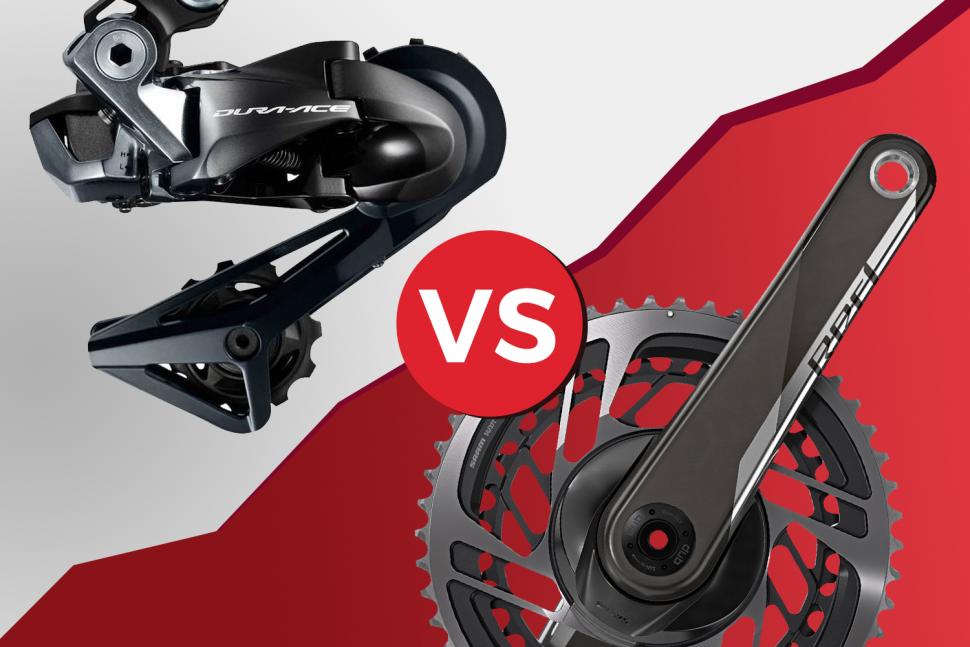 Head to head Shimano Dura-Ace R9150 Di2 v SRAM Red eTap AXS March 2021
Head to head Shimano Dura-Ace R9150 Di2 v SRAM Red eTap AXS March 2021Head to head: Shimano Dura-Ace R9150 Di2 v SRAM Red eTap AXS
If you’re choosing between Shimano Dura-Ace 9150 Di2 and SRAM Red eTap electronic groupsets, lucky you! Here’s how the two different systems compare.
Shimano first introduced Dura-Ace Di2 in 2009 and then added an electronic version of its next-level-down Ultegra groupset in 2011. The current version of Dura-Ace Di2 – R9150 – was launched in 2017; an announcement of a new version is widely expected in 2021.
Read our complete guide to Shimano road bike groupsets here.
SRAM launched Red eTap in 2015 and followed up in 2019 with 12-speed Red eTap AXS. The two biggest differences from Di2 are that Red eTap shifting is wireless, and the AXS incarnations has 12 sprockets on the rear hub, with a significantly different approach to gearing centered on its 10-tooth smallest sprocket. Di2 runs from a single battery that’s usually hidden inside the seat post with cables running to the various components. Red eTap has separate batteries in each of the shifters and derailleurs. Shift signals are transmitted and received in accordance with SRAM’s proprietary wireless protocol known as Airea.
Here’s our complete guide to SRAM road bike groupsets.
Other electronic groupsets are available for road bikes. Campagnolo offers electronic versions of its Super Record, Record and Chorus groupsets and FSA launched its K-Force WE semi-wireless electronic groupset (where the derailleurs are linked by a cable but communication with the shifters is wireless) in 2018.
We'll get to the nitty-gritty details of AXS gearing in a while, but perhaps the two most important things to know are that there's no upgrade path from 11-speed Red eTap to the new groupset and you'll need new wheels (or at least a new freehub body) to accommodate the AXS cassette.
Here's our SRAM Red eTap AXS first ride review.
And here's our First Ride: Shimano Dura-Ace 9150 Di2.
Here’s how Shimano Dura-Ace R9150 Di2 and SRAM Red eTap AXS compare in key areas.
Initial setup
If you’re building up a frame from scratch, nothing is simpler than fitting SRAM eTap, and that's as true for AXS as it was for v1.0 eTap. You bolt the various parts in place, you pair them up – and that’s it. You’re talking about 15 minutes. Genuinely.
Di2 is more complicated in that you need to run the wires internally – which may or may not be straightforward, depending on your frame – and you usually need to fit the battery internally too.
You need a Junction A unit to connect the shifters to the rest of the system. With 9150 Di2 this fits either into the frame or into the end of the handlebar. If you go for the handlebar version you need a hole in the handlebar itself by which the wire can exit.
You also need a Di2 wireless unit to allow the system to communicate via ANT private protocol with head units (such as a Garmin Edge bike computer) and your smartphone, tablet or PC.
We’re not saying that fitting R9150 Di2 to a bike is especially complicated, but it isn’t as simple as fitting eTap.
It’s worth pointing out that this is a one-time job. Unlike with mechanical shifting, you’ll probably never need to replace the cables. And if you’re buying a built up bike you don’t need to worry about the initial setup anyway.
Check out our review of SRAM Red eTap.
In use
With Red eTap AXS you perform shifts via a paddle that sits behind the brake lever. You push the paddle on the right shifter inward to move the chain to a smaller sprocket. You push the paddle on the left shifter inward to move the chain to a larger sprocket. You can hold each paddle in those shift positions to perform multiple shifts – if you want to go from the bottom of the cassette up to the top, say, you just push the left paddle and hold it there. You push both paddles together to shift from one chainring to the other.
When he reviewed SRAM Red eTap AXS Dave Arthur said: "Colour me impressed! It just works. The Tucson terrain has frequent gradient changes that require a lot of gear changes. If you're fussy about your cadence this is a huge benefit and is one of the biggest appeals of the new groupset.
"Press a gear button and the gear change comes very quickly and with very little perceptible noise; the new distinctive Flattop chain has more clearance between the cassette sprockets and in any gear combination there was almost no noise. SRAM has updated the motors and chips and says the shift speed is quicker, but to be honest it's difficult to say in this isolated test whether it really is more rapid. It still doesn't feel as lightning fast as Shimano's Di2.
"By far the most appreciable difference is the increased single-tooth jumps on the new cassette. This 10-28 cassette provides seven single-tooth jumps, compared with four on an 11-28 or 11-30 11-speed cassette. It's something you can feel straight away, and I was able to maintain a happy cadence on these rolling roads.
"The new rear mech with its Orbit fluid damper is another bonus too. It kept the chain taut and minimised noise and stopped the chain flapping about, with seemingly no impact at all on the shift performance."
Unlike eTap v1.0, AXS is highly customisable. In a default AXS set-up, the right-hand paddle moves the rear mech to smaller sprockets, the left-hand paddle moves it to larger sprockets and pressing both together gets you a front mech shift.
Using the SRAM AXS Mobile App you can change the behaviour of the derailleurs either in simple ways like swapping which paddle actuates upshifts and which downshifts, to activating one of two automatic shifting modes: sequential and compensating.
Sequential does what it says on the tin, shifting you from one gear ratio to the next even if that entails multiple sprockets and a chainring shift. If you prefer to control the front mech yourself, compensating mode shifts the rear mech to maintain your cadence after a front mech shift. These functions are very similar to Shimano's Synchro Shift (see below).
In terms of shifting performance, it's hard to fault Dura-Ace R9150 Di2. It's fast and super reliable via both the front and rear derailleurs and in either direction. It's faster than eTap AXS, probably because the signals are travelling along wires rather than through the ether so there's less latency in signal processing. In particular, the Di2 front shift is faster because in an eTap system the brain in the rear mech has to decide whether it's detected signals from both switches on the levers or just one.
Dura-Ace R9150 Di2 is also even more customisable than AXS, not least because there are more buttons to customise. By default, the left-hand shifter controls the front derailleur and the right-hand shifter controls the rear derailleur. Each has two buttons located behind the brake lever, one for upshifts and the other for downshifts, and another button hidden under the hood cover.
You can use Shimano’s E-Tube Project software on a PC, iPad or smartphone to set any of these six buttons to upshift or downshift either of the two derailleurs. Each of these buttons can have two different functions, one when you press it and the other when you press and hold it.
You can set Di2 buttons to change the display on a Garmin Edge bike computer. Shimano invites third party manufacturers to come up with other uses for the buttons, which send commands via a private ANT+ protocol, so functionality could be increased in future.
The R9150 Di2 buttons have a more pronounced click to them than previous versions. This means that you always know whether or not you've pressed a button, although our experience is that you can occasionally hit the wrong one when riding in big winter gloves because they're positioned so close together.
Shimano’s Synchro Shift
Shimano Dura-Ace R9150 Di2 also offers Synchro Shift. The Junction A unit (below) allows you to switch between shift modes: manual, semi-Synchro Shift or full Synchro Shift.
Manual is straightforward: one button moves the rear derailleur one way, another button moves it the other way, and it’s similar set up for the front mech.
If you go to full Synchro Shift, you simply press a button for a lower gear and the Di2 system will move you to the next lowest gear available even if that means shifting chainrings. One push of a button and the system could move you from the large chainring to the small chainring, and from a large sprocket to a smaller sprocket; that's like SRAM's sequential mode, though Shimano got there first with Synchro Shift.
If you were using the small chainring and one of the small sprockets and pressed the button to move to a higher gear, the system might move you automatically to the large chainring and a larger sprocket.
Synchro Shift is fully customisable. You can go into Shimano’s E-Tube app and decide what will happen when you press up or down from any chainring/sprocket combination.
Why would you want to use Synchro Shift on the road? It has really been introduced for time trial and triathlon where you can have just one bar end shifter on the left aero bar and another on the right. However, if you want to use it on a standard road bike, it is an option.
There is currently no warning beep to let you know when the front derailleur is going to move the chain from one chainring to the other, which would allow you to adjust the amount of pressure you’re putting on the pedals accordingly, although Garmin will bring in this feature via its Edge bike computers, and any other computer brand that cares to can do the same.
The semi-Synchro Shift option might be of more interest to road bike users. With semi Synchro Shift, when you move the front derailleur the rear derailleur will automatically move the chain a certain number of sprockets at the same time.
Say you’re moving from the small chainring to the large chainring. In normal circumstances this would increase the size of the gear by a considerable margin, right? With semi-Synchro Shift enabled, the system will move the chain up the cassette to reduce that margin and keep your cadence more consistent.
Moving from the large chainring to the small chainring would usually reduce the size of the gear by a large chunk so Di2 will automatically move the chain down the cassette to reduce the jump.
If you’re an experienced bike rider you probably do this yourself a lot of the time without even thinking about it.
Mapping the gears – deciding the specifics of how Synchro Shift and semi Synchro Shift work – is simple via Shimano’s E-Tube software which you can run on a PC, iPad or a smartphone.
Satellite shifters
You can add Shimano’s sprint shifters (SW-R610) and climbing shifters (SW-R9150, above) to allow you to change gear more easily from the top of your handlebar or from the drops.
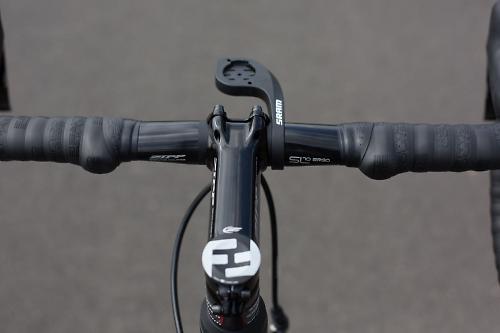
Similarly, SRAM offers Red eTap Blips (above) which are satellite buttons. A Blip links to a shifter via a cable – the only cable in the eTap system. Pressing a Blip connected to the right shifter moves the rear mech outboard; pressing a Blip connected to the left shifter moves the rear mech inboard, and pressing a Blip connected to the left shifter at the same time as pressing a Blip connected to the right shifter moves the chain from one chainring to the other.
You can position Blips on the tops of your handlebar for use when you’re climbing or on the drops for shifting when you sprint. They can go either underneath your handlebar tape or out in the open.
Battery life
Each SRAM eTap component has its own battery. The derailleurs’ rechargeable batteries offer power for over 1,000km (625 miles) of typical riding while the widely available CR2032 button cell batteries in the shifters need changing on average about once every two years, according to SRAM.
You can check the charge of different components at any time. LED lights indicate the current level of charge.
If you ignore these LEDs and allow the rear mech battery to run out, you can swap the front mech battery on to the rear, foregoing front shifting for the journey home.
If you run out of both, you can manually put the chain onto the gear you want and ride home singlespeed.
Recharging a derailleur battery is simply a case of unclipping it and putting it on the USB-powered charger for 45 minutes.
When the shifters’ CR2012 batteries run low you simply swap new ones into the ports in the hoods.
If you pair a recent Garmin Edge computer to your SRAM shifting, it'll warn you of low battery conditions.
The brain of a SRAM system is in the rear mech. It switches itself on when it detects movement and establishes communication with the front mech. However 'movement' includes driving down the motorway with your bike on a rack or in the boot and there have been reports of long journeys significantly depleting rear mech batteries. It's sensible to take it off when travelling.
The Shimano BT-DN110 Di2 internal mounted battery can last between 1,000km and 2,000km between charges, depending on conditions and the amount of shifting you do.
The battery is usually fitted inside the seat post although it can be accommodated elsewhere within the frame. You can check how much charge remains via lights on the Junction A unit.
If the battery runs low the front derailleur will stop working first. If you run out of juice entirely you can position the chain on a sprocket of your choice and ride home in a single gear.
You will run out of charge 40 miles from home at least once.
Gear ranges
Shimano Dura-Ace chainsets are available in five different variations: 50/34 (a 50-tooth outer chainring and a 34-tooth inner chainring), 52/36, 53/39, 54/42 and 55/42 with seven crank arm lengths from 165 to 180mm.
The RD-R9150 rear derailleur (only one cage length is available) will take cassettes with a minimum sprocket size of 11 teeth and a maximum sprocket size of 30 teeth.
SRAM Red AXS chainsets are available in 46/33, 48/35, and 50/37 versions and in six crank arm lengths from 165mm to 177.5mm. SRAM says the 13-tooth difference between chainrings makes for better shifting, but the Dura-Ace Di2 front mech copes just fine with 16-tooth differences.
Unlike the Dura-Ace rear derailleur, the Red eTap one comes in short cage and medium cage versions. The short cage will take sprockets with a maximum of 33 teeth while the medium one will work with sprockets up to 36 teeth, so you can get very low gears with eTap as long as you buy the correct rear derailleur. If you want an old-school set of very close ratios with SRAM's 10-26 AXS cassette, you'll need the short cage mech.
Going to 12 sprockets allowed SRAM to widen the gear ranges they could offer. Depending on exactly which chainrings and sprockets you choose, you can get a range of up to 460% with Red AXS sprockets and chainset from a 46/10 high gear to a 33/33 low. Dura-Ace gives you a maximum range of 401%, with a 50/11 top gear and a 34/30 low, and in the SRAM set-up the top gear is higher and the low gear lower.
Disc brakes
Both Shimano Dura-Ace Di2 and SRAM Red eTap AXS groupsets are available with hydraulic disc braking. In fact, while SRAM claims to make Red eTap AXS shift-brake levers for cable-operated rim brakes, we've never seen a bike specced with them.
The Shimano Dura-Ace R9170 dual control levers and hydraulic disc brakes are the first that Shimano has included within the Dura-Ace groupset. Previously, you could get Dura-Ace compatible disc brakes but they weren’t actually part of the group.
The R9170 dual control levers are almost the same shape as the R9100s (for mechanical shifting and cable operated rim brakes) and the R9150s (for Di2 shifting and cable-operated rim brakes). There’s no bulbous front end like you get on some earlier Shimano designs, the hydraulic reservoir being positioned in the centre of the lever body. The only real difference is that the R9170 design is a bit more of a handful where the hydraulic hose exits at the upper inner edge.
As well as offering reach adjustment, the R9170 levers have free stroke adjustment allowing you to tune the amount the lever moves before the pads touch the rotor.
The R9170 brakes, available in flat mount only, generally work well whatever the conditions. You know the brakes are going to bite exactly when you want them to so there’s no need to give the levers a squeeze a second or two in advance just to be on the safe side. It doesn’t matter how wet the roads and the rims are, these brakes work, it’s as simple as that.
Yes, there’s a small drop off in performance in wet weather but it’s nowhere near the magnitude you see with rim brakes. That gives you the confidence to keep pushing your speed in situations when you might potentially soon need to slow down, like going into a tight corner. In some circumstances it might be the difference between getting into a break and missing the train.
SRAM Red eTap HRD Shift-Brake Controls have a higher front end than their Shimano counterparts with the hydraulic master cylinder positioned in the nose. You can adjust the contact point – when your brakes engage – and reach to the lever.
Both post mount and flat mount brake brake callipers are available.
In use, riders report somewhat better reliability from the SRAM brakes whose pistons are less liable to get stuck than those of the Dura-Ace brakes. On the other hand the looks of the tall lever hoods of the SRAM brakes are controversial.
Power meters
SRAM offers power measurement via its Red AXS chainset with a Quarq DZero power meter. This comes with carbon arms and the power meter unit integrated into the chainrings. That saves weight, but has been a source of concern in some quarters as high-mileage riders contemplate having to replace the whole unit when a chainring wears out.
SRAM claims +/-1.5% accuracy and you can get left/right power balance.
The system uses a replaceable CR2032 battery and has an IPX7 waterproof rating. 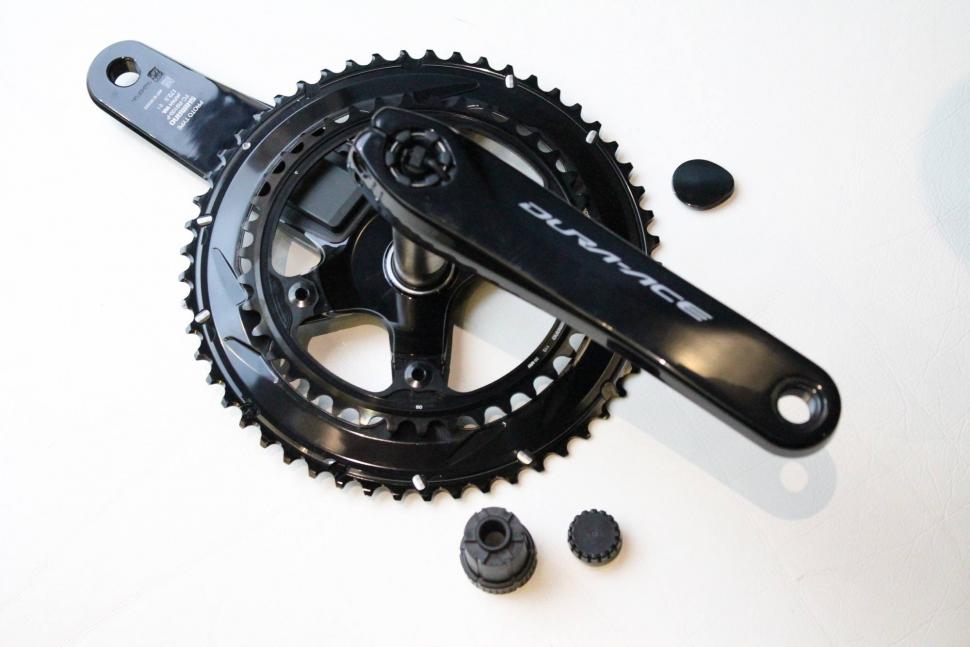
The latest version of Dura-Ace also offers power measurement. The FC-R9100-P is a chainset with an integrated power meter. Strain gauges sit inside the crank arms to measure left and right leg power. The power meter ‘brain’ sits inside the Dura-Ace driveside spider.

An integrated rechargeable battery powers the unit. It can be charged with a small magnetic adapter without needing to remove covers or casings.
Shimano tells us it has thoroughly tested the power meter to a very high waterproof standard, but it has not provided an IPX rating at this stage.
Check out our guide to choosing a cycling power meter.
Overall
These are actual weights for the various components of each groupset courtesy of r2-bike.com. The SRAM figures include batteries where applicable.
| Shimano Dura-Ace R9150 Di2 | SRAM Red eTap AXS | |
|---|---|---|
| Rear derailleur | 204g | 276g |
| Front derailleur | 104g | 144g |
| Shifters (rim brake) | 230g | 286g |
| Brakes (rim) | 307g | 272g |
| Chainset | 625g (53/39) | 577g (50/37) |
| Bottom bracket | 66g | 76g |
| Cassette | 176g (11-25) | 175g (10-26) |
| Chain (114 links) | 247g | 250g |
| E-Tube parts | 48g | — |
| Battery | 51g | — |
| Total (rim brake) | 2,058g | 2,056g |
| Shifters, disc brakes & hoses | 652g | 784g |
| Disc rotors (2 x 160mm CenterLock) | 238g | 270g |
| Total (disc brake) | 2,411g | 2,552g |
Here are the recommended retail prices of the various parts of each of the groupset. Shop around and you'll find them cheaper.
| Shimano Dura-Ace R9150/9170 Di2 | SRAM Red eTap AXS | |
|---|---|---|
| Shifters & derailleurs | — | £1,800.00 |
| Rear derailleur | £564.99 | £610.00 |
| Front derailleur | £349.99 | £370.00 |
| Shifters (for rim brakes) | £559.99 | £790.00 |
| Brakes (rim) | £335.98 | £310.00 |
| Chainset | £509.99 | £625.00 |
| Bottom bracket | £54.99 | £34.00 |
| Cassette | £235.00 (11-28) | £325.00 |
| Chain (114 links) | £47.99 | £65.00 |
| E-Tube parts | £131.94 | NA |
| Battery | £156.99 | NA |
| Front junction | £114.99 | NA |
| Internal junction | £29.99 | NA |
| Recharging power pack | NA | £40.00 |
| Total (rim brakes) | £3,092.83 | £3,169.00 |
| Shifters, derailleurs & brakes | £2,300.00 | |
| Shifters and disc brakes | £1,019.98 | £1,070.00 |
| Disc rotors (pr) | £143.98 | £218.00 |
| Total (disc brakes) | £3,360.82 | £3,357.00 |
As you can see from these figures, rim-brake SRAM Red eTap AXS is about £80 more expensive at full retail price; the disc brake version is much closer.
For bargain hunters, here are typical market prices for the two groupsets:
| Shimano Dura-Ace R9150/R9170 Di2 | SRAM Red eTap AXS | |
|---|---|---|
| Complete groupset (rim brakes) | £2,549.00 | NA |
| Complete groupset (disc brakes) | £2,759.00 | NA |
| Shifters & derailleurs (rim brakes) | — | £1,500.00 |
| Shifters & derailleurs (disc brakes) | — | £1,750.00 |
| Rear derailleur | £419.99 | £549.00 |
| Front derailleur | £329.00 | £325.60 |
| Shifters (for rim brakes) | £382.99 | £632.30 |
| Shifters + disc brakes | F: £499.99 | R: £439.99 | £855.98 |
| Brakes (rim) | £199.99 | £219.988 |
| Disc rotors | £143.98 | £110.00-£126.00 |
| Chainset | £374.99 (53/39) | £480.00 |
| Bottom bracket | £31.99 | £34.00 |
| Cassette | £164.99 (11-28) | £215.49 |
| Chain (114 links) | £35.99 | £49.99 |
| Wires | £19.99 - £26.00 ea | NA |
| External battery mount | £107.99 | NA |
| Battery | £54.99 | NA |
| Front junction | £92.49 | NA |
| Internal junction | £26.99 | NA |
| Recharging power pack | NA | £30.00 |
Which to buy?
Both Shimano Dura-Ace Di2 and SRAM Red eTap AXS are superb groupsets, as you’d expect. These are, after all, the top tier in the range of their respective brands and they’re used for racing at the very highest level, and we’re split in the road.cc office as to which we prefer.
Each shifts well and you really shouldn’t run out of charge while you’re on the road providing you get into the habit of checking battery levels regularly. Or at least not more than once.
In terms of function, the biggest difference between the two groupsets is the way that you change gear (see ‘In use’ above), and your choice might come down to whether you prefer SRAM’s design and approach to gearing or Shimano’s.
Di2 has a lot of appeal for tinkerers, and anyone who has strong feelings on how they want their shifting to behave. You can even fine-tune the speed of the shift. ETap, on the other hand, is simpler. It's hard to hit the wrong button, however you've set things up, because there's still only one on each lever.
SRAM Red AXS's lack of gear wires makes for a very clean look and . Dura-Ace is chunkier, and a look at the comments on this site for any announcement of new a Shimano groupset will reveal that Shimano's current design language is at least a little controversial.
About road.cc Buyer's Guides
The aim of road.cc buyer's guides is to give you the most, authoritative, objective and up-to-date buying advice. We continuously update and republish our guides, checking prices, availability and looking for the best deals.
Our guides include links to websites where you can buy the featured products. Like most sites we make a small amount of money if you buy something after clicking on one of those links. We want you to be happy with what you buy, so we only include a product if we think it's one of the best of its kind.
As far as possible that means recommending equipment that we have actually reviewed, but we also include products that are popular, highly-regarded benchmarks in their categories.
Here's some more information on how road.cc makes money.
You can also find further guides on our sister sites off.road.cc and ebiketips.
road.cc buyer's guides are maintained by the road.cc tech team. Email us with comments, corrections or queries.
Mat has been in cycling media since 1996, on titles including BikeRadar, Total Bike, Total Mountain Bike, What Mountain Bike and Mountain Biking UK, and he has been editor of 220 Triathlon and Cycling Plus. Mat has been road.cc technical editor for over a decade, testing bikes, fettling the latest kit, and trying out the most up-to-the-minute clothing. He has won his category in Ironman UK 70.3 and finished on the podium in both marathons he has run. Mat is a Cambridge graduate who did a post-grad in magazine journalism, and he is a winner of the Cycling Media Award for Specialist Online Writer. Now over 50, he's riding road and gravel bikes most days for fun and fitness rather than training for competitions.
Latest Comments
- Rendel Harris 26 min 28 sec ago
No mention of the cost...at $1449 I think I'll stick to the old "I feel a bit thirsty, better have a drink" system.
- bobbinogs 32 min 34 sec ago
Ref the UCI fine, it was amazing just how many gels MVdP needed in the aftermath of the Pog crash...seemed to be quite a few, one at a time, and...
- ChrisA 35 min 10 sec ago
One bike seized? I'm sure there were four of them. ‐‐---- Quote "E-bike riders caught using police drone" Did the steal the drone, as well?
- Kapelmuur 44 min 41 sec ago
My bike was stolen from a supermarket car park in Calais, it was locked on a roof carrier....
- ChrisA 46 min 38 sec ago
Mirror advised.
- brooksby 57 min 30 sec ago
She had demonstrably caused serious injury so that's not up for debate (or shouldn't be)....
- Surreyrider 1 hour 8 min ago
I've tried Lakes in shops and they always seem to have a high volume, meaning a lot of space above my foot.
- BikingBud 1 hour 57 min ago
Yup - Rivermind! ****SPOILER ALERT***** https://www.radiotimes.com/tv/sci-fi/black-mirror-common-people-ending-e...
- lesterama 2 hours 59 min ago
A friend told me that Gravaa doesn't work with inserts. Visma actually glued their tubeless tyres on to avoid tyre detachments! Sounds like a...
- Velophaart_95 3 hours 18 min ago
That was my first thought when I saw, and read it........


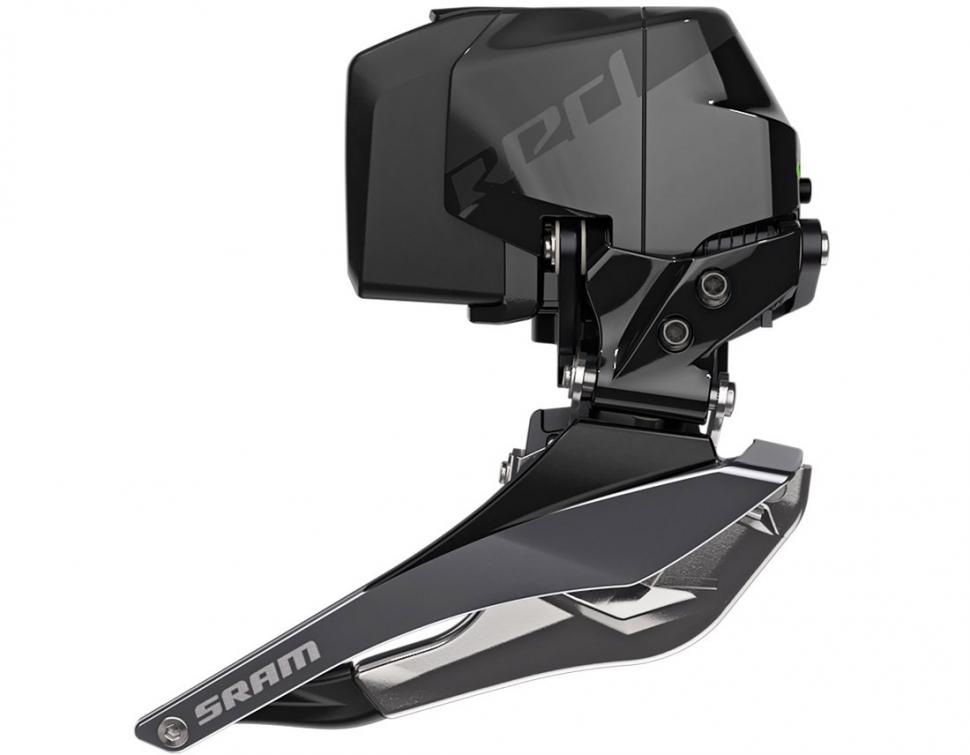
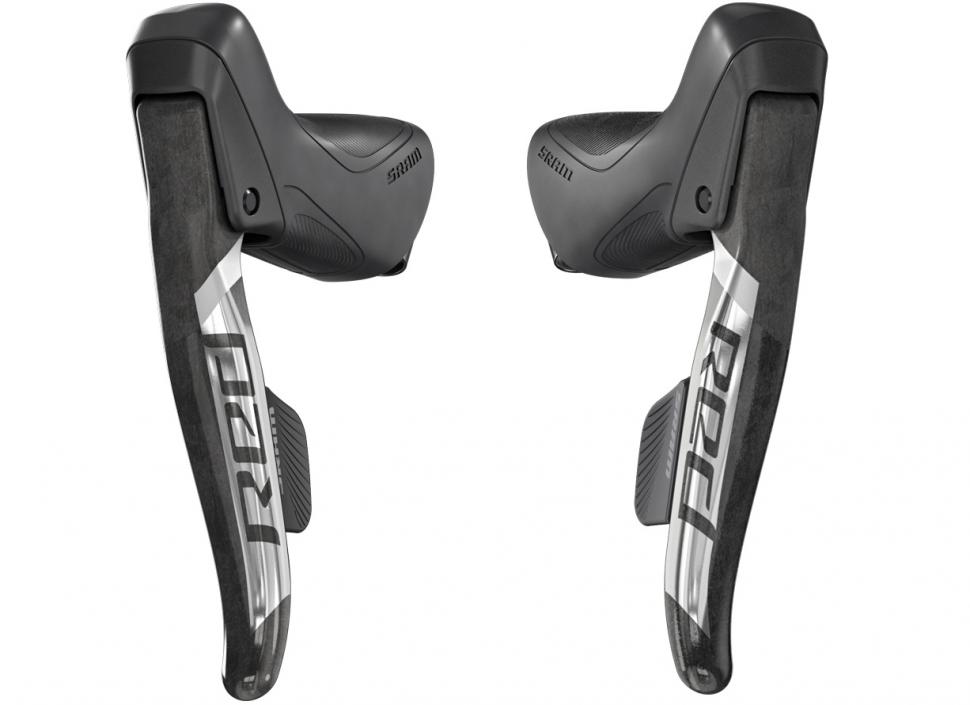

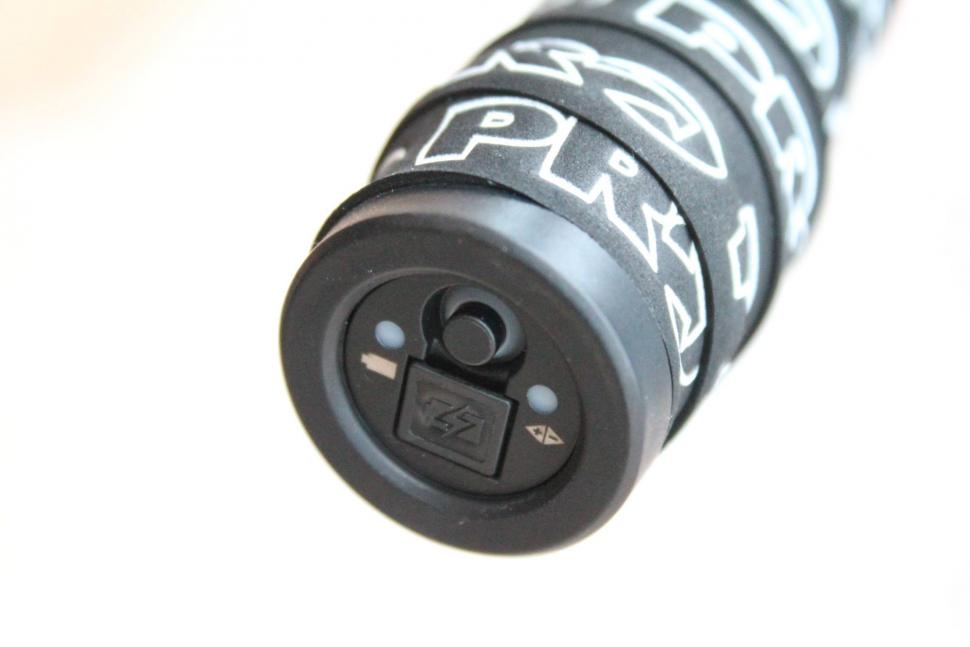
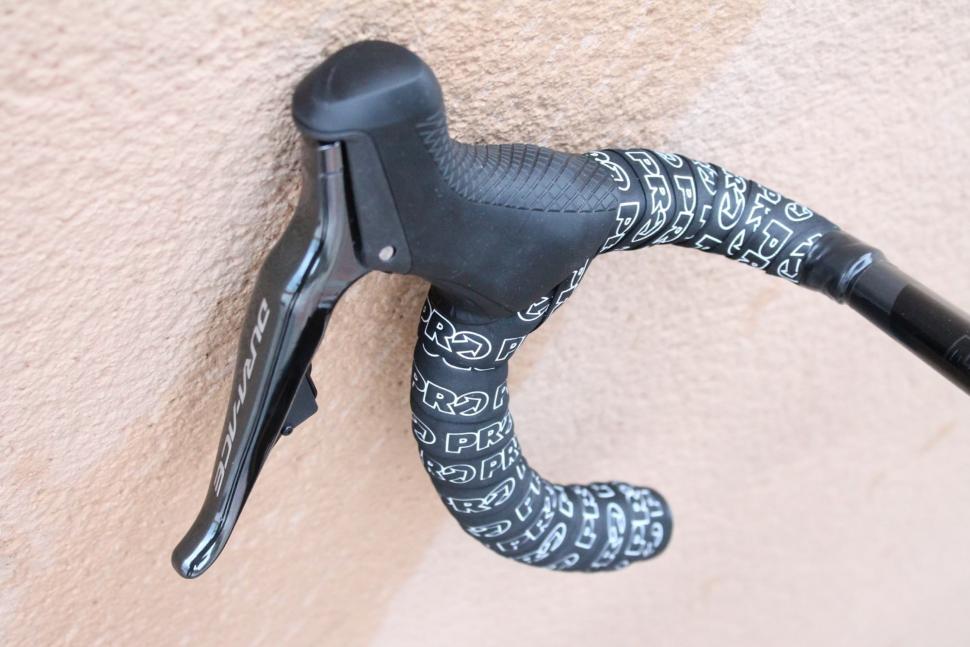
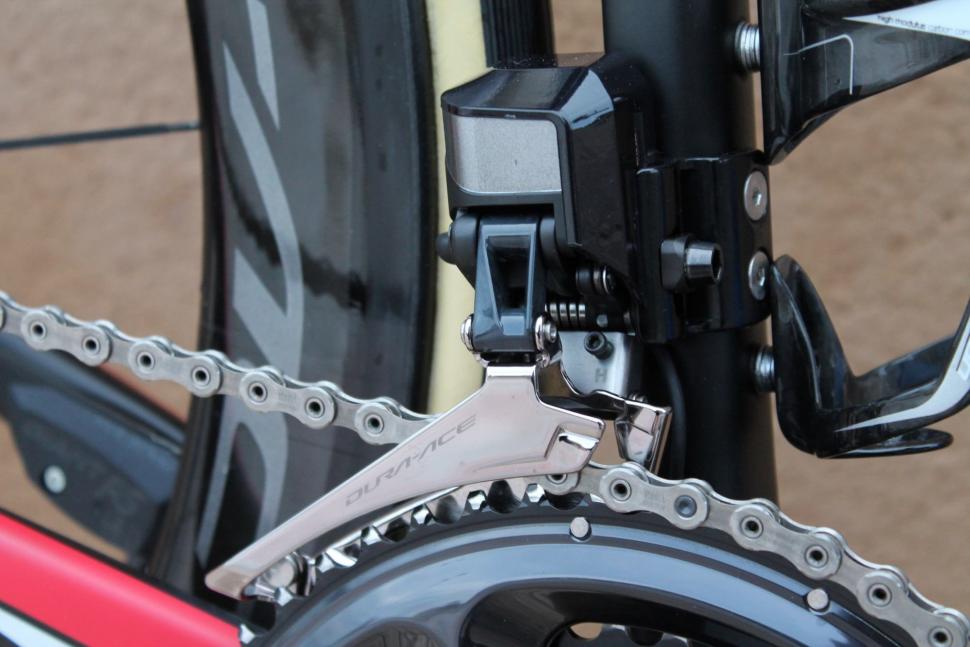

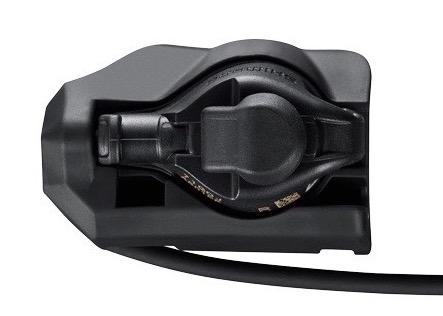
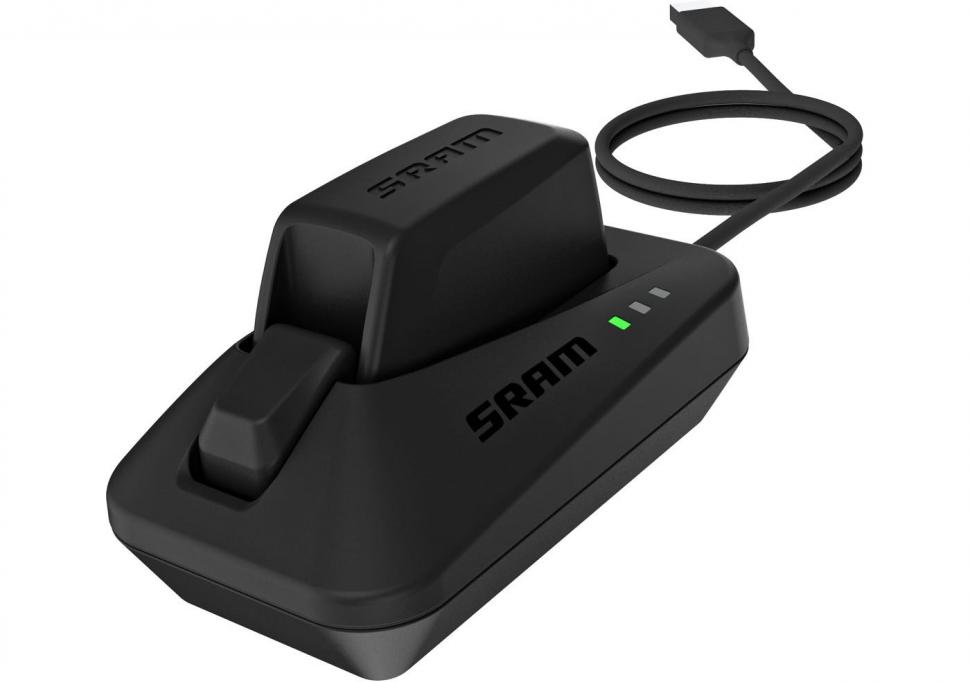
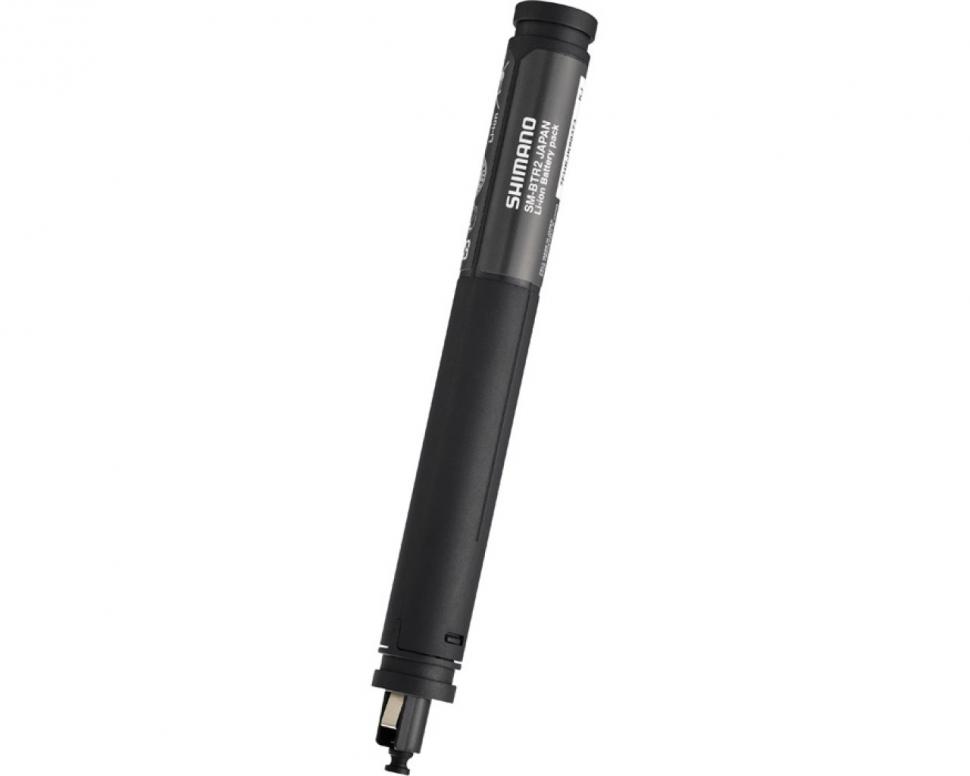
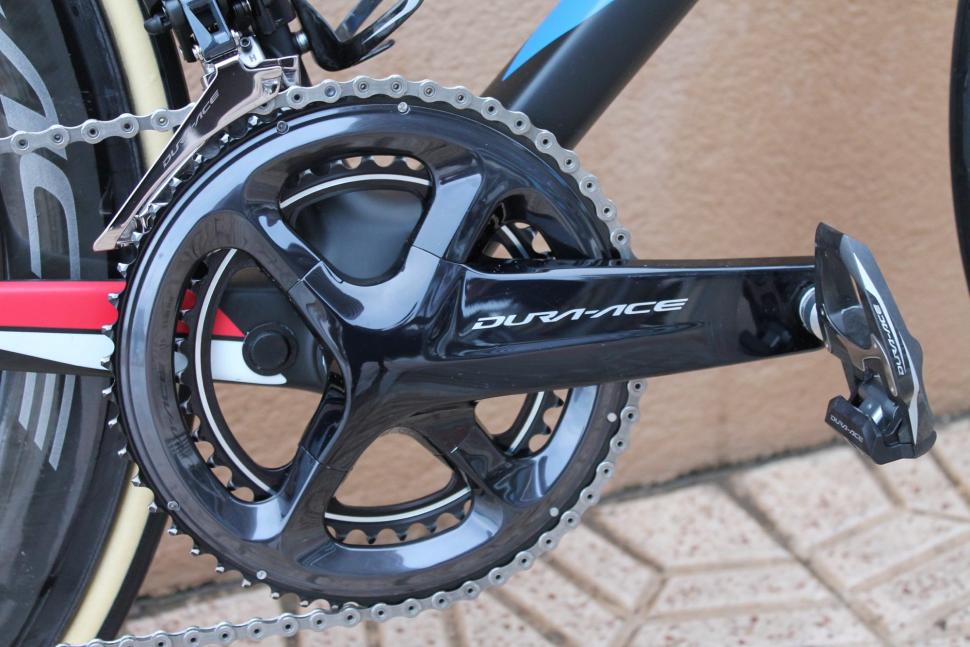

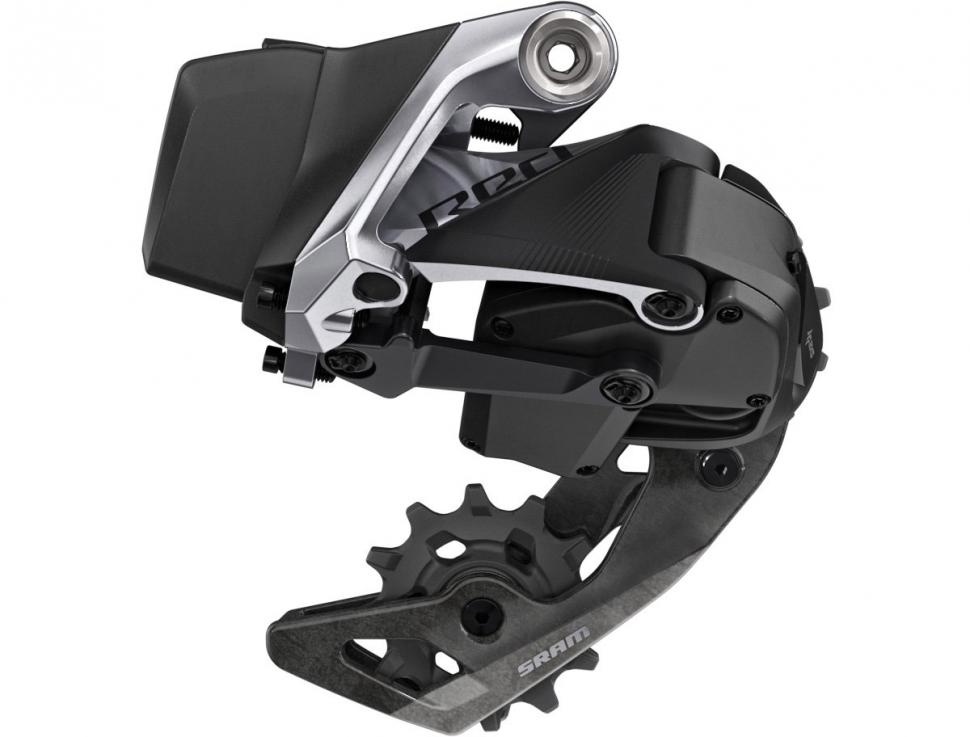

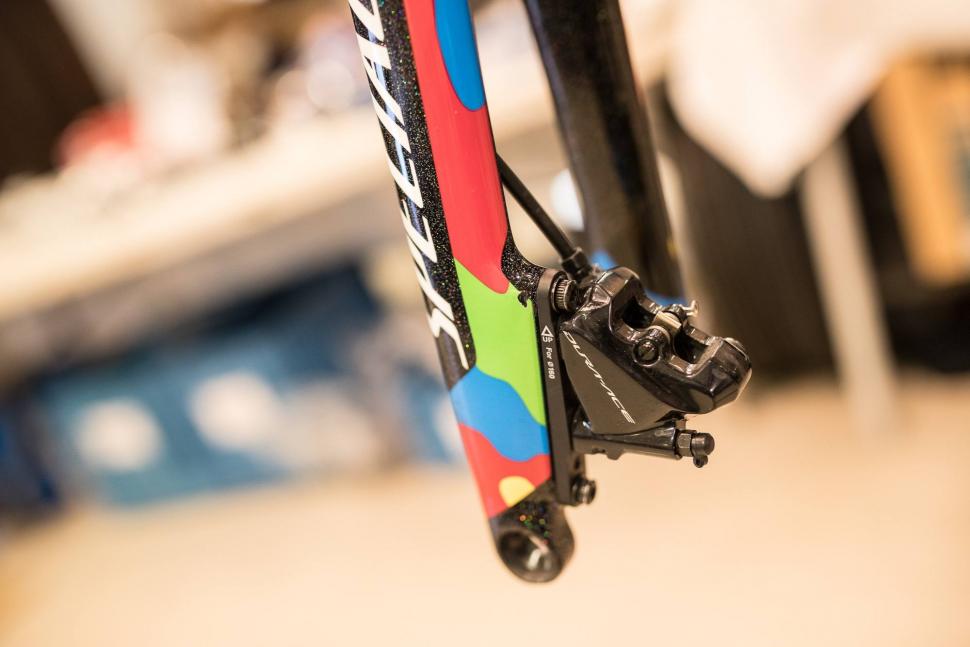



Add new comment
2 comments
is this actually a new article or updated as written at the top...or has road.cc finally learnt how to use the reset comments button......ha ha
Sram is a far more modern groupset overall with innovative gearing, wireless and 12 speed. Right now, go for Sram, if you can wait a year, see what new Dura ace has in store.